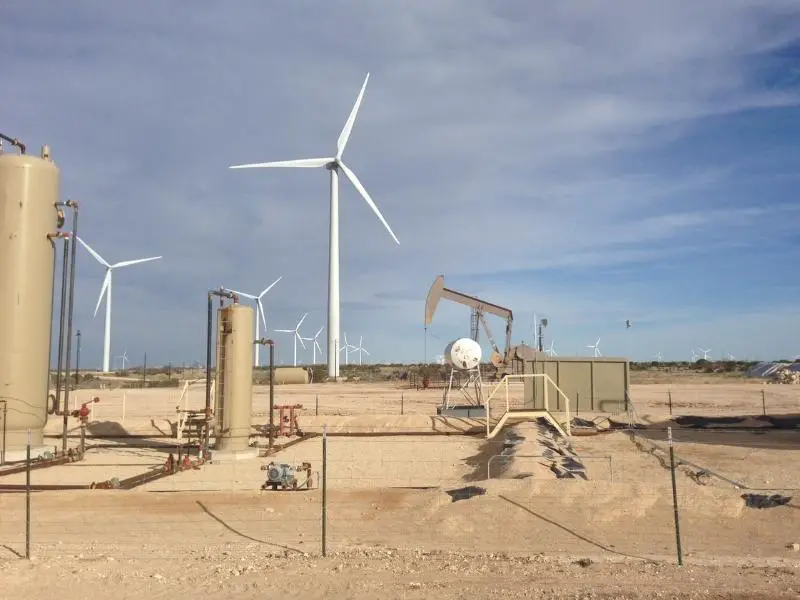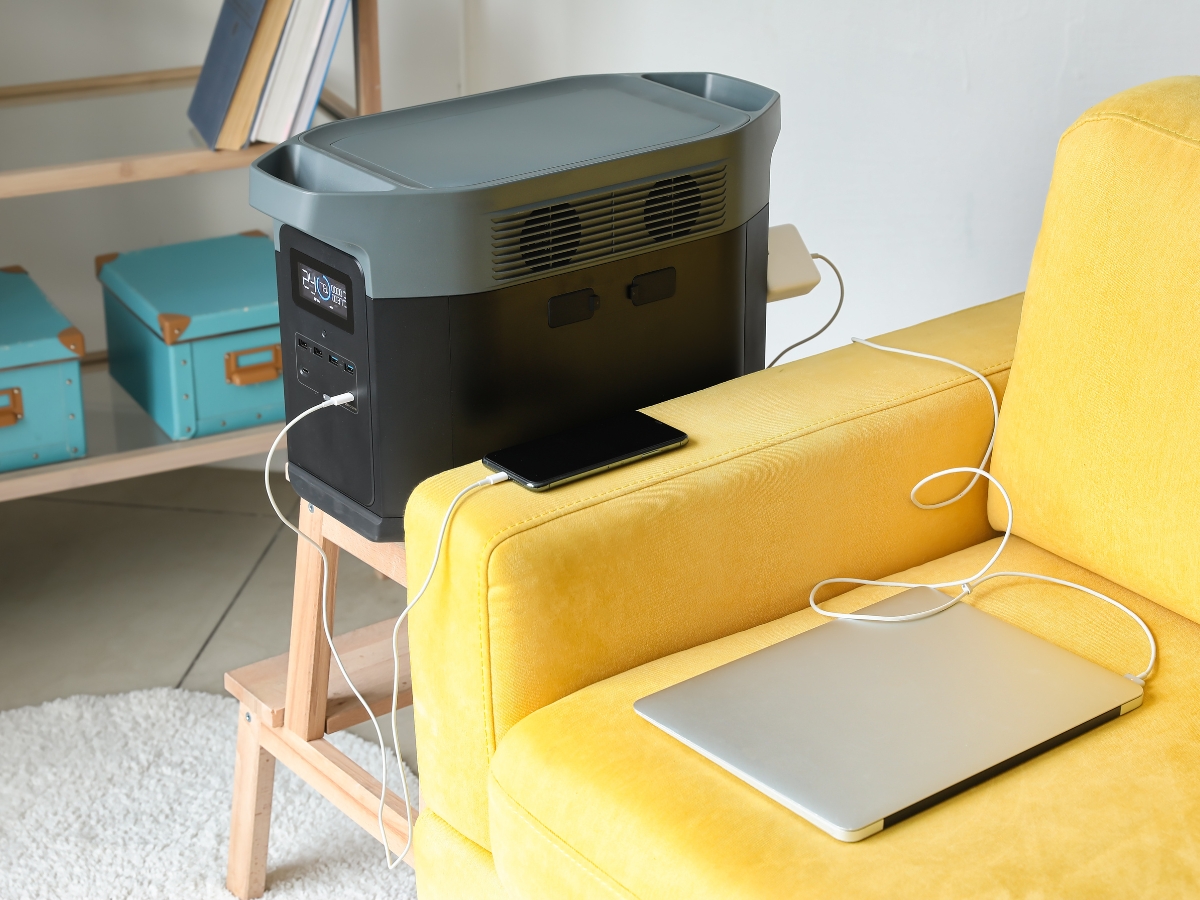When you think of wind turbines, you think of clean energy free from emissions that pollute the air, water, and ground. Most people certainly don’t think about the need for oil lubrication for all the moving parts that go into a wind turbine for it to function correctly.
Since wind turbines require oil to lubricate moving parts, it’s disappointing to consider that we still need fossil fuel to help keep something that creates electricity from a renewable energy source running correctly.
While we’re not entirely free from fossil fuels, we are getting there, but the main question is if wind turbines need oil, do wind turbines leak oil?

Do Wind Turbines Leak Oil?
While the oil that wind turbines use to keep their moving parts moving doesn’t have a way, an oil leak is always a matter of when and not if, just as with oil pipelines.
That being said, yes, wind turbines do leak oil. One of the many concerns about an oil leak from a wind turbine is if the turbine in question is located in a sensitive natural area.
For example, wind turbines on the ocean are a great idea as there are higher wind velocities, but oil and grease used in wind turbines can leak, which harms marine life in the area, and the cleanup process is complicated.
If the marine life in the area is delicate, such as the Great Barrier Reef or other reefs, then the use of the typical oil becomes problematic if there’s a leak.
How Oil Leaks Affect Livestock
If a farm has a wind turbine installed among the fields, then an oil leak in the wind turbine would not only contaminate the food the farm grows but also contaminate the groundwater of the area.
Contaminated groundwater affects the soil, grass, and plants. In turn, when the livestock feed from the contaminated grass or plants, they can become sick with what’s called petroleum product poisoning in cattle.
Suppose the lubricants and oils have lead additives. In that case, it leads to additional problems such as kidney damage, liver damage, anemia, sterility, oxygen deprivation of the tissues, and damage to blood vessels.
Petroleum product poisoning in cattle not only produces skin lesions where the hide becomes blistered, cracked, or dry but also damages the respiratory, gastrointestinal, and nervous systems.
The cattle may experience bloating that doesn’t always result in death, or they may become thin and lethargic. They may experience a chronic wasting condition as it disrupts normal digestive functioning and produces low blood glucose.
Birds, cats, dogs, and other animals would also be affected to a greater or lesser extent with similar symptoms.
Solutions To Wind Turbine Oil Leaks
The good news is that people were unsatisfied with the fossil fuels used to lubricate a device that creates electricity from a renewable source, which is why there have been efforts to improve upon wind turbines that make them greener but allow the wind turbines to function.
Secondary Spill Containment
One innovation involves oil filtration panels as a secondary spill containment. Under the EPA’s Clean Water Act, secondary spill containment falls under the Spill Prevention Controls and Countermeasures, which were put into place to prevent oil spills from reaching navigable waters.
The BCI Poly Seam barrier allows rainfall to pass through, but it becomes an impervious barrier if it comes into contact with oil. With the BCI VIPOR system, the main filter core solidifies when it comes into contact with oil.
Renewable Lubricants
The moving components on wind turbines need lubrication to keep the wind turbine operational, but this technology is no longer wholly reliant on fossil fuel oil to lubricate the machines.
Biolubricants, such as vegetable oil, are a far more sustainable and environmentally friendly way to allow the wind turbine to function while at the same time avoiding the possibility of accidental oil spills despite the secondary spill containment systems.
There are biodegradable, renewable lubricants that are free of petroleum, food-grade, and safer to work with.
These biodegradable, renewable lubricants aren’t only used for wind turbines, but they can be used in racing vehicles, diesel vehicles, other high-performance vehicles, as well as personal vehicles.
Bladeless Turbines
One way to stop worrying about using oil to lubricate moving parts of a wind turbine is not having moving parts on a wind turbine. The same concept behind bladeless fans provides an alternative way to harness the wind to generate electricity.
These wind turbines use a vortex oscillation principle where the top part of the wind turbine oscillates in the wind.
There are many benefits to switching to bladeless wind turbines. Bladeless wind turbines don’t have any bearings or gears that can break inside or outside the turbine, and there’s no oil required to lubricate the turbine.
This means that the design of the bladeless wind turbine drastically reduces the costs for maintaining, operating, and manufacturing the turbine.
A second benefit that bladeless wind turbines provide is that they’re not a threat to birds. According to the Sierra Club, up to more than a million birds are killed by wind turbines in the United States each year.
The Animal and Insect Impact of Wind Turbines
Birds aren’t the only victims of wind turbines, as up to 900,000 bats are killed each year by the spinning blades of wind turbines. Bats are vital to the ecosystem as they pollinate over 700 plants, some of which we use as food.
They also play an important role in pest control, eating mosquitoes, moths, beetles, and other pests.
One of the main complaints about wind turbines is the noise they produce. A wind turbine for a home is placed at least 300 meters away, at which it produces a sound that registers at 43 decibels.
For context, a refrigerator is at 40 decibels an air conditioner is 50 decibels, which is the same as moderate rainfall. Forty decibels and under is considered faint, and a moderate noise level is between 60 and 70 decibels.
That being said, bladeless wind turbines are far quieter than the average 43 decibels that the average wind turbine produces.
The solution to Oil Leaking Wind Turbines
While the answer is yes to whether wind turbines leak oil, there are steps you can take to mitigate the issue, as with the secondary spill containment, or by removing the problem entirely with biodegradable, renewable lubricants and with bladeless wind turbines.
There are always those who are working to improve upon technology, whether it’s to fix known issues or to find solutions to other problems.
If you use a biodegradable, renewable lubricant and you notice that you have a leak, you can breathe easier knowing that it’s not as bad as it could be if you were using oil that contaminates the soil, water, plants, and damages the health of humans and animals alike.



